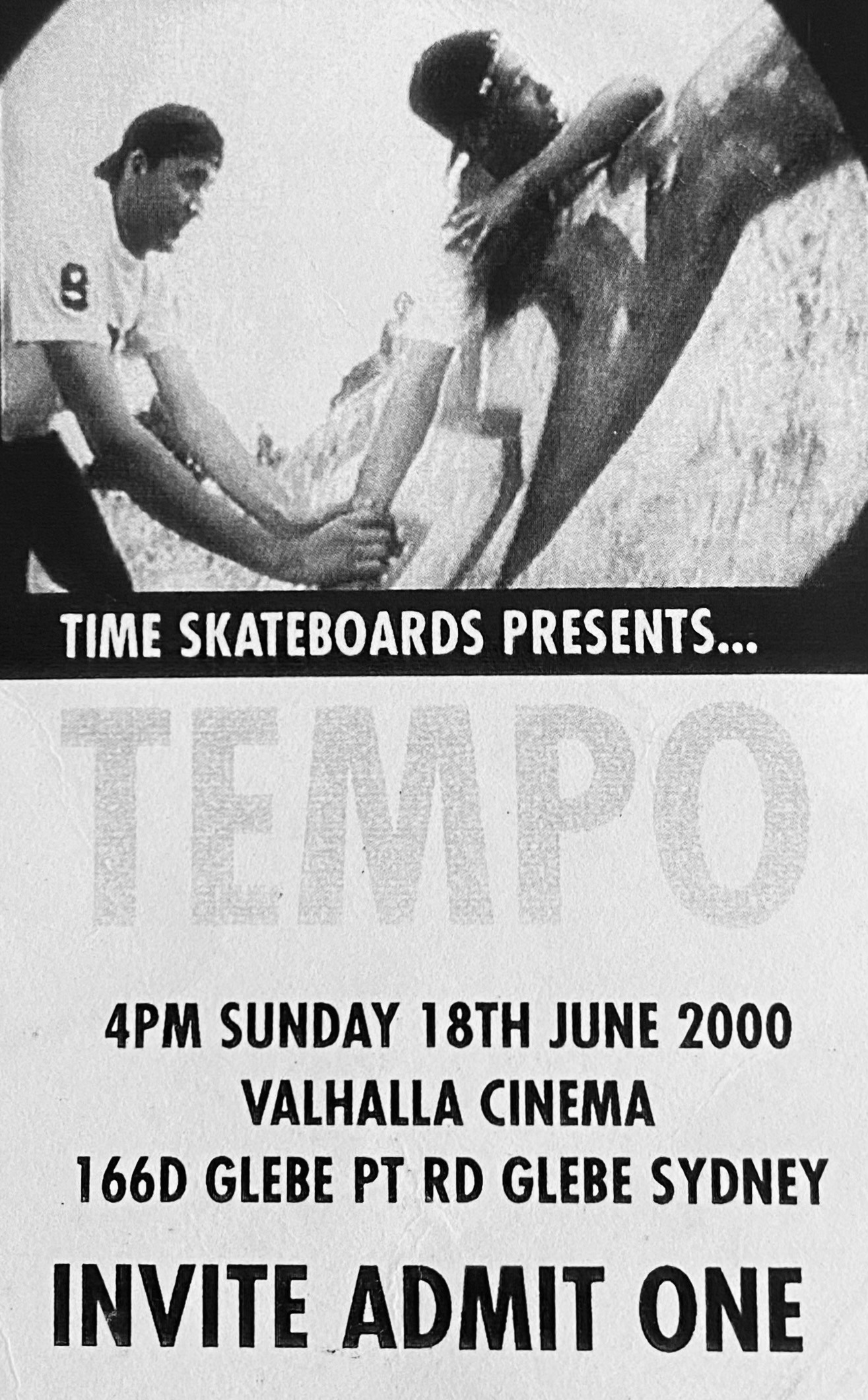In the lead up to the 25th anniversary of Tempo, Time Skateboards’ final video, Dion Kovac came across a hoard of dusty DV tapes which, with some TLC, offered up the video’s raw footage. Duncan Ewington has delved deep into the brand’s history to celebrate, along the way interviewing Dion and also the brand’s co-founder (alongside Al Boglio), Christian West. Inject some RSI into your upper appendages and find out about one of Australia’s most well-loved brands, alongside watching aforementioned remix and the original video here; procrastination never looked so fine…
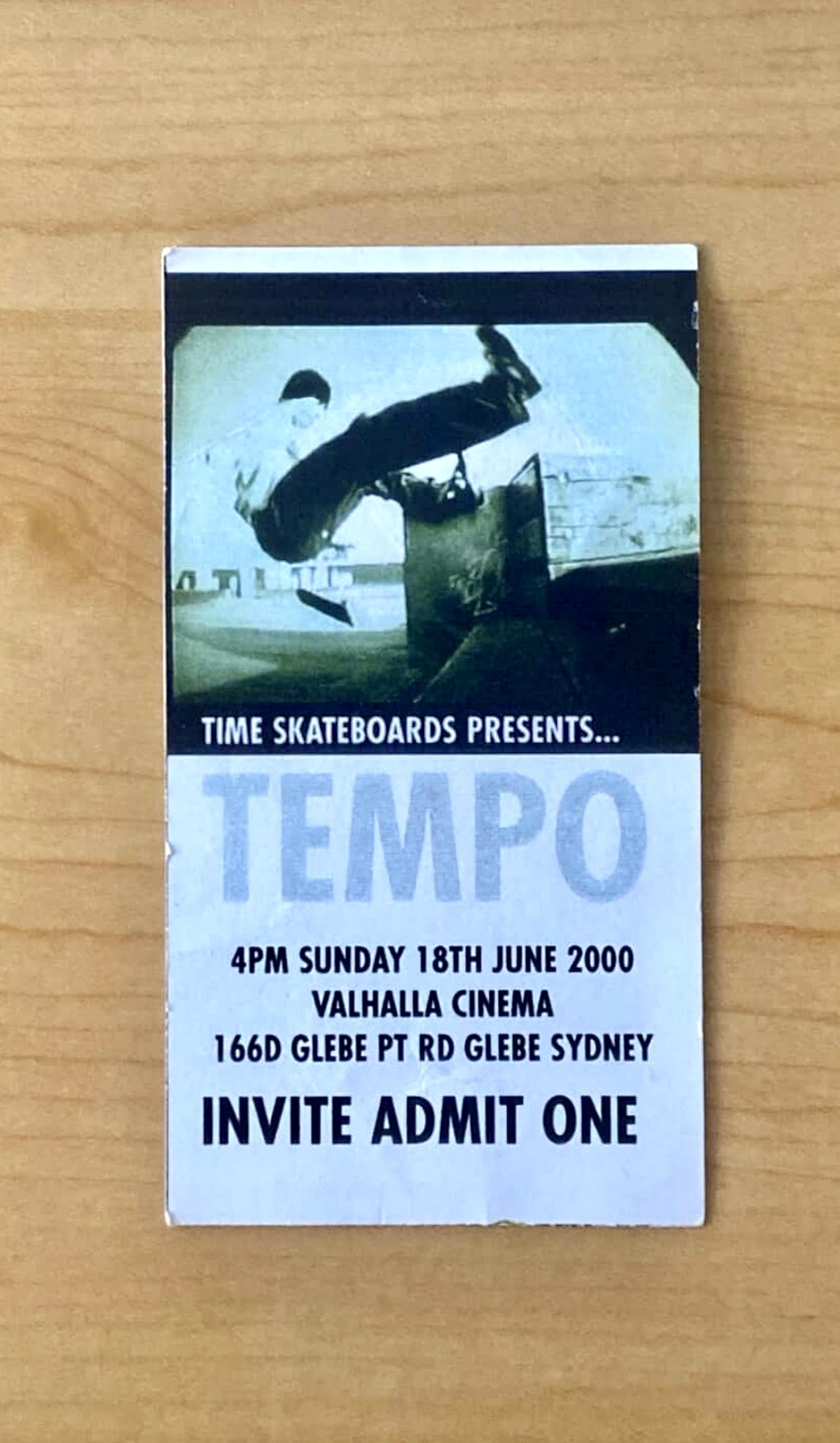
Time waits for no one, and in the last 25 years in skateboarding A LOT has happened. Change is inevitable, but since the advent of social media skateboarding has vastly grown and rapidly progressed. For those raised in a completely digital age it’s hard to conceive the impact that videos once imparted on the collective consciousness of the culture. Back when the world’s population of skaters was little (with an even smaller group of filmers), videos were a major undertaking and a lot harder to produce. Having to work with expensive analog equipment, tape-to-tape editing suites (that didn’t have visual timelines), long hours spent logging tapes and then actually having to produce the hard copies and distribute them did not make the job any easier!
This year marks the 25th anniversary of the release of the Time Skateboards video Tempo and, to coincide with the landmark in Australian skateboarding history, OG team rider Dion Kovac unearthed the original tapes deep from storage. After removing the ants that had decided to make themselves a home in the tapes (apparently they love the chemicals of DV tapes) Dion has dutifully and diligently compiled what was salvageable into a remix of B-sides, alt angles and a behind-the-scenes edit celebrating the making of a video that crossed boundaries between decades and succinctly captured the Sydney scene of the era – whilst ushering in a new generation of Australian skateboarding.
Before “the internets” opened up global communication channels and made the skate world a lot smaller it was generally difficult to access what was happening in real time in different country’s skate scenes. As such, for many people reading, watching or even hearing about Time this is completely new, so please forgive me for the history lesson.
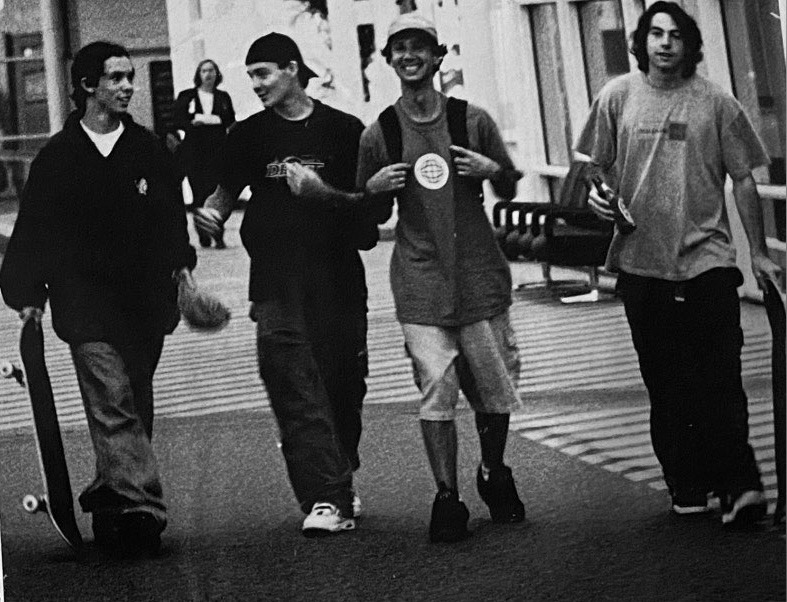
For those readers unfamiliar with Time Skateboards, it was a brand started in 1994 by Al Boglio and Christian West which ran until June 2000, just before the internet took off; hence why, if you’re not from Australia and skated during this period, you’ve probably never heard of them. The brand started with a small bank loan, was originally printed by hand in West’s garage and grew to the point that by 1998 they were outselling some of the biggest US brands sold in Australia. The company was shuttered after the Australian dollar crashed, production minimums were tripled and they were unable to find an investor to help grow the business and make it viable. Time was briefly rebooted on a boutique scale in 2018 and, if you look hard enough, you might be able to find some reissues and even some fresh product…
A lot’s been said about the year 2000 and some say this was a start (or end?) of a golden age in skateboarding. In 2000 Australia was thrust onto the world stage, with the hosting of the Olympics seeing all eyes were on Sydney. The Australian skate scene was buzzing with optimism and there were a lot of Aussie brands producing high quality products and videos, with skaters pushing their skills and taking them to an international level. Australia was fostering a strong industry of its own and Sydney-based Time Skateboards so happened to be one of the brands leading the charge.
Like art, fashion and music, skateboarding and its videos are completely subjective – I’m not personally saying that Tempo is by far the best representation of that era in Australian skateboarding. Everyone has their own opinions, as different times and places have their own meaning and place in people’s hearts. But, for some people, TEMPO captured Sydney and Australia at a time where the local scene and industry was thriving and also documents the unique style and vibe of a collective group of some Australia’s great skateboarders at the Time.
Tempo’s soundtrack reflects the genres popular amongst skateboards of the era – smooth trip hop, bumping hip hop, 70s classic rock and electronic beats. In a small way, this is an insight and time capsule into the tastes of Australian skateboarders on the verge of a new millennium.
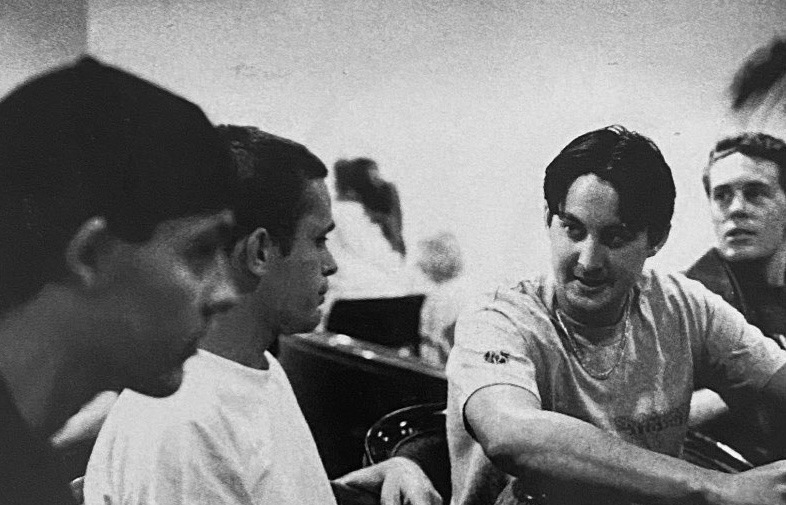
In the analog era, videos had a profound influence on people. You weren’t constantly seeing new skaters, spots, edits and tricks every time you picked up a phone or turned on a screen. You would religiously play that VHS tape until the next video came out and the people, tricks and the soundtrack would become etched into your memory – and for a lot of people it later became a cache to remember certain points of your life by.
If you’re a real skate nerd, or just curious about this era in Australian skateboarding, you might also like to check out these videos which were released around the same time – Juice Clothing “Flick Of The Switch”, Criminal Skateboards “All In The Family”, Boom Skateboards “Brotherhood”, Phil Watt’s “Burbs”, Blank Clothing “Vandals” – and, if you really want to dive deep into Australian history, check out the documentary “Tic Tac 2 Heelflip”.
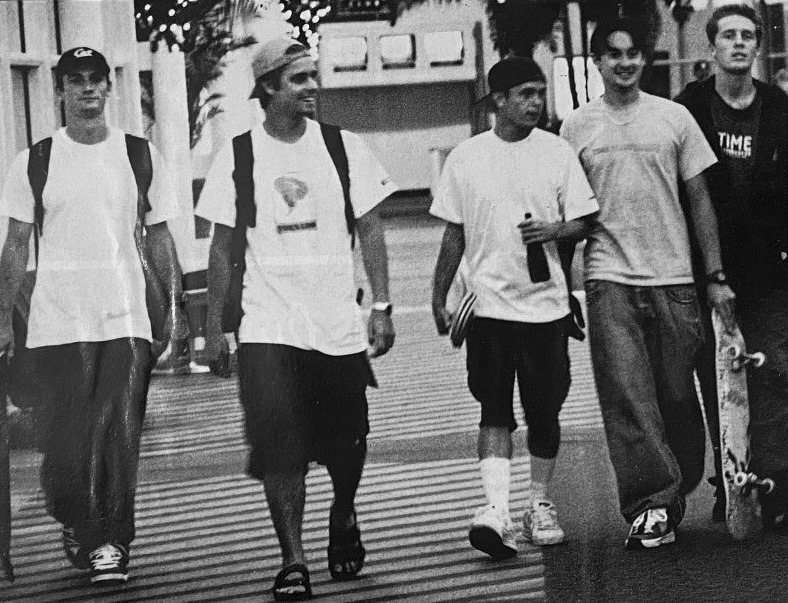
Christian West interview
What was Tempo filmed and edited with?
Tempo was filmed in the 90s, so it was all pre-digital tape. I had the 3ccd SONY Hi8. There was no death lens back then so the fisheye lens we would use gave the rounded edges on the screen; which I still like more, I think? All the editing was done on an edit suite called an AVID. It was digital editing but nothing like what you can do now on an iPad.
How long did it take to film and edit?
The filming was probably anywhere from 6 to 8 months. The editing took so long. First we would have to sit there for hours on end, real time dumping the clips from the hi8 tapes on to Beta digital tapes. We would do all nighters just dumping tapes, then would have to catch each individual clip from the Beta, then drop into the AVID. Once all the clips were in the AVID, editing wasn’t too different to what you would do now, but obviously nowhere near as advanced. And this was all in a suite that we would have to book sessions for, I couldn’t just pull out a laptop in my downtime, mess around and get a few clips done. In the end it took about two months and a lot of red eyes.
Whose idea was it for the intros to each part?
I’m not sure where that came from. I think we just wanted a contrast from the artistic intros with super 8 film that were in Money. I guess I wanted to show how all the riders were different and some had things going on in their life other than skating. I kinda wish we gave that job to a pro documentary guy or journalist or something.
Was Tempo any different to film than the other two Time videos?
Yeah it was, I guess by then we had been around for a bit. Before I was just filming constantly with everyone in the city or whatever road trip we went on until we collected enough footage to put vids together, but with Tempo it was like, “Okay guys, we’re doing another Time Vid.” We planned a bunch of different trips with the team to specifically film for Tempo, we even had the name before we started filming. We ran print ads in magazines in the lead up to the release, with photos of tricks that would be in the vid. We made sure everyone had new gear, I mean it wasn’t a massive budget thing but I guess it felt like more of a production.
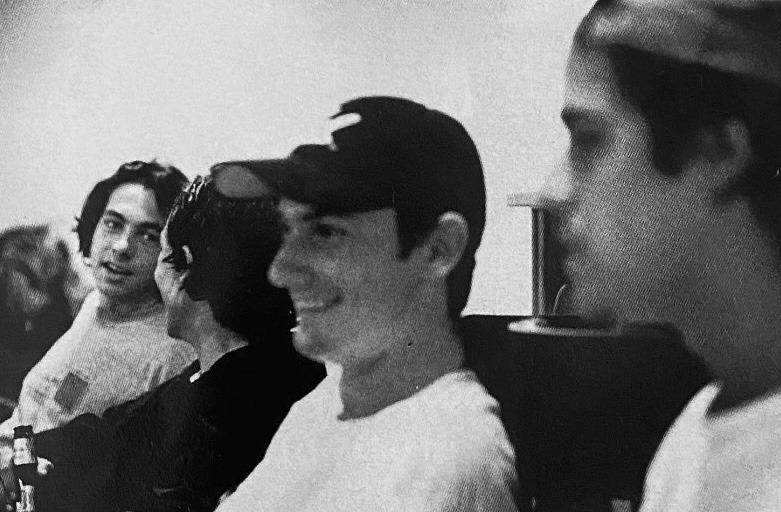
How do you see the importance of skate vids then vs. now?
The importance between then and now is exactly the same and I think it does the same thing, exposing new skaters and tricks and promoting brands. It’s just a different format now, it’s instant with new clips every day. I know skaters still build a body of work to release but it’s more constant. Back then, apart from 411VM, each brand would drop a full length video maybe once every 2 years and you would watch it over and over. Skaters could live off a part, or in some cases a single trick, for a while.
Where do Time vids sit in the cultural landscape map of Aus skate history?
I like to think we did a good job back then exposing Aussie skaters considering the limited resources we had on offer. I think Money is a timeless vid to watch, it all just flows well with the super 8 film footage mixed in. I’m not sure if any younger generations would know of the vids now, but whenever a clip hits IG or something there’s always cool comments from the 40+ crew.
In hindsight would you have done anything differently?
Again, I think it could have looked cool if someone else did the intros, just to separate them from that skate cam look. And maybe been a bit looser on the cuts, and not have been so fussy about what went in. Back then everything was cut tight, but now when I watch the raw clips there might be another trick at the end of a line, something sketchy that was left out, or everyone celebrating and running in after someone made a trick. We would leave all that out in editing.
Who was the easiest to film with and stack clips?
Everyone put in effort filming for Tempo, they all knew we had a filming window and were super keen to get clips. But Adam Tanner and Justin Balmain came up with parts which was cool, as they were the newest to the team.
Do you have a favourite part of the video?
Tanner and the mixed section. The bull rush clip with Skin Phillips dropping the board is hectic. Anthony (Sporto) Fitzgerald’s ollie over the glass balustrade at Cook and Phillip is fucked up!
How was the video received when it got released?
It premiered at the Valhalla Cinema in Glebe. They had a VHS projector for one of the screens and the place was packed, we didn’t expect the crowd that showed up. We had to usher the crowd up to the Toxteth Hotel. I guess the crew liked it, I don’t recall any real negative reviews.
Was it hard to end Time considering the video had just been released?
Yeah definitely, it was really hard. The previous year we had dropped some of our best graphics and product, had a heap of press, and we just had to end it. We had gone as far as we could running it out of a one bedroom unit, we tried to get investors to take it to the next level but no one could take it on, and for a few other reasons it just wasn’t possible to stay open. Good times while it lasted though!
Dion Kovac interview
Where did you find the tapes?
I grabbed Christian’s camera and a handful of tapes from him on a recent visit to Sydney. It was pretty much just a lucky dip in his storage space, which included a few tapes from 1994 and some from the 1999-2000 era.
What condition were they in?
Not good, but that’s a story for another time.
What prompted you to undertake this project?
This all happened by chance. I was going through an old box of photos when I found an original Tempo invite for the premiere which was dated June 2000. fortunately a lot of the footage I had recovered was from that period so I immediately started uploading a few clips on Instagram, mostly favourites and some unseen footage mentioning a 25 year remix coming. I got a lot of people sharing and messaging me asking what I had found, as a lot of this footage hadn’t really seen the light of day since back then. I guess I was prompted to put together something mainly just for me and a few other friends that were part of the video.
Where do you think Tempo fits into the Australian skateboarding history timeline?
Tempo stands as the last video release from Time so it’s definitely the end of an era. I think it’s become recognised as a moment of Australian skate history for the late 90s and early 2000s. The skating still stands up today as some of the best. The whole team just had a different energy back then, no mobile phones, no internet, just spontaneous meet-ups in the city. We were all so super close and such good friends, I’m happy to say that this lifelong bond still lasts today and everyone is still in regular contact.
Were you happy with your own footage in the vid?
Yes and no. I was extremely happy to be a part of the incredible line up, but I wasn’t really filming much. The focus for Tempo was mainly to introduce Adam Tanner and Justin Balmain, both such naturals and it shows how effortless it was for them. My favourite part, though, is Andrew’s intro; him rolling through the city talking about how we’re outside of all this, we’re just operating on a level of freedom that you can’t find anywhere else, our perspective on how we look at the environment around us is what makes us all so unique. This is why I love skateboarding. Go watch and listen for yourself.
How long did you skate for Time?
I was there from day one, however a board with my name on was released sometime mid ‘96 I think.
